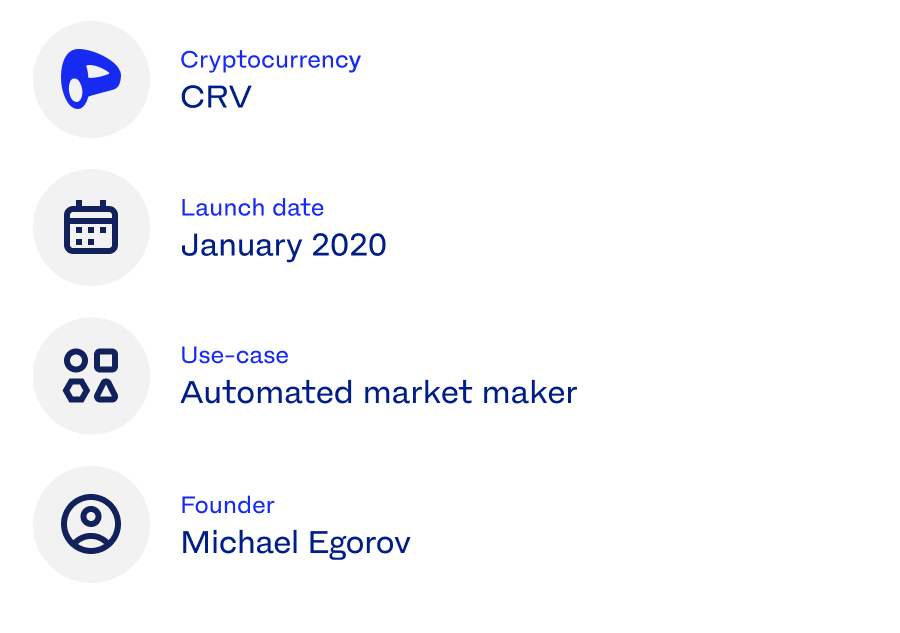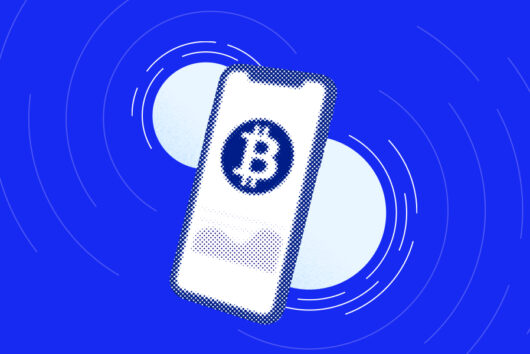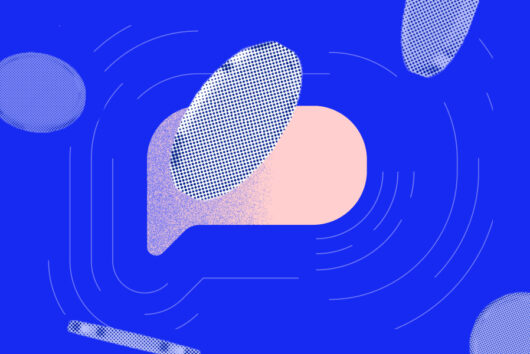What is Curve (CRV)?


Curve is an automated market maker platform (AMM), a decentralised exchange that allows users to trade cryptocurrencies such as stablecoins while striving to minimise loss of value on the trade due to price changes. It’s different from other AMM platforms in that it only lists similar-behaving cryptocurrencies – two stablecoins pegged to the US Dollar, for example – allowing it to operate more efficiently and with lower fees.
How does Curve work?
Curve uses an algorithm to help people trade stablecoins and other types of less-volatile cryptocurrencies with minimal “slippage” (the difference between the expected price of a trade and the price at which the trade is executed). When you trade on Curve, for example, you can exchange your cryptocurrency more predictably and with fewer surprises in terms of how much you get in return.
An automated market maker (AMM) is a type of algorithm built on blockchain technology that automates the process of executing trades on decentralised exchanges (DEXs).
Unlike traditional exchanges that rely on buyers and sellers offering different prices for an asset, AMMs use liquidity pools with crypto that is sourced from other users and pooled together. Each pool consists of specific cryptocurrency pairs supported on Curve. The pools are designed to include similar types of cryptocurrencies – generally stablecoins – a measure that aims to minimise losses and keep fees low.
The protocol then connects users to different exchange markets with the most favourable fee rates. Curve incentivises users to deposit their crypto to the liquidity pools by allowing them to earn passive income.
Here’s how liquidity pools work
Selecting pairs – Liquidity providers choose a specific liquidity pool and decide which cryptocurrency pair they want to provide liquidity for. For example, on Curve, a liquidity pool might involve stablecoins like USDT and USDC.
Equal value contribution – These liquidity providers deposit an equal value amount of both stablecoins into the selected liquidity pool. Let’s say it’s $100 of USDC and $100 of USDCT. The deposited crypto represents their stake in the pool. The protocol calculates the initial exchange rate based on the provided amounts of each token.
Earning fees – Liquidity providers earn fees from trades that occur in the liquidity pool. When users swap USDT for USDC, they pay a fee, and a portion of that fee goes to the liquidity providers in proportion to their stake in the pool.
Staking CRV – Some liquidity providers may choose to stake their earned CRV (Curve DAO Token) as an additional step. Staking CRV can provide additional rewards, such as a boost in yield or voting power in the governance of the protocol.
What is the cryptocurrency of Curve?
The native cryptocurrency of Curve is called Curve DAO (CRV), and it plays a key role in the Curve finance protocol.
CRV holders have the ability to participate in the governance of the Curve protocol. They can vote on proposals that may impact various aspects of the protocol, such as fee structures, new functionalities, or changes to smart contract parameters.
Users can stake their CRV in Curve to earn crypto rewards in the form of additional CRV tokens or a share of the fees generated from each trade. Staking CRV helps incentivise liquidity provision, as it rewards users for contributing to the platform’s liquidity. These rewards are determined by the amount of CRV staked and the duration of the stake.
Who was the founder of Curve?
Curve Finance was founded by Michael Egorov, a Russian software engineer with a background in mathematics and computer science. He created Curve to address specific challenges in the decentralised finance (DeFi) space, particularly related to stablecoin trading. The primary problem that Curve aimed to solve was the slippage issue inherent in trading stablecoins on traditional decentralised exchanges.
Slippage refers to the difference between the expected price of a trade and the actual executed price. In the case of stablecoins, which are designed to maintain a stable value close to a specific fiat currency (like the US Dollar), minimising slippage is crucial for efficient trading.
By focusing on stablecoins, Curve aimed to create a more capital-efficient and stable trading environment, making it attractive for users looking to trade stablecoins or provide liquidity to such markets.
What is Curve’s orginisation structure?
Curve is a decentralised autonomous organisation (DAO), where decisions are made collectively by the community of CRV investors through a decentralised governance process. The DAO structure aligns with the broader principles of decentralised finance (DeFi).
Useful tools
Curve blog
Curve white paper
Curve on X
*Investing in cryptocurrency may result in the loss of capital as the value can fluctuate. This information should not be construed as a solicitation to trade. All opinions, news, research, analysis, prices or other information is provided as general market commentary for information purposes only and is not investment advice or recommendation. Luno always advises you to obtain your own independent financial advice before investing or trading in cryptocurrency.
 Discover
Discover Help Centre
Help Centre Status
Status Company
Company Careers
Careers Press
Press


